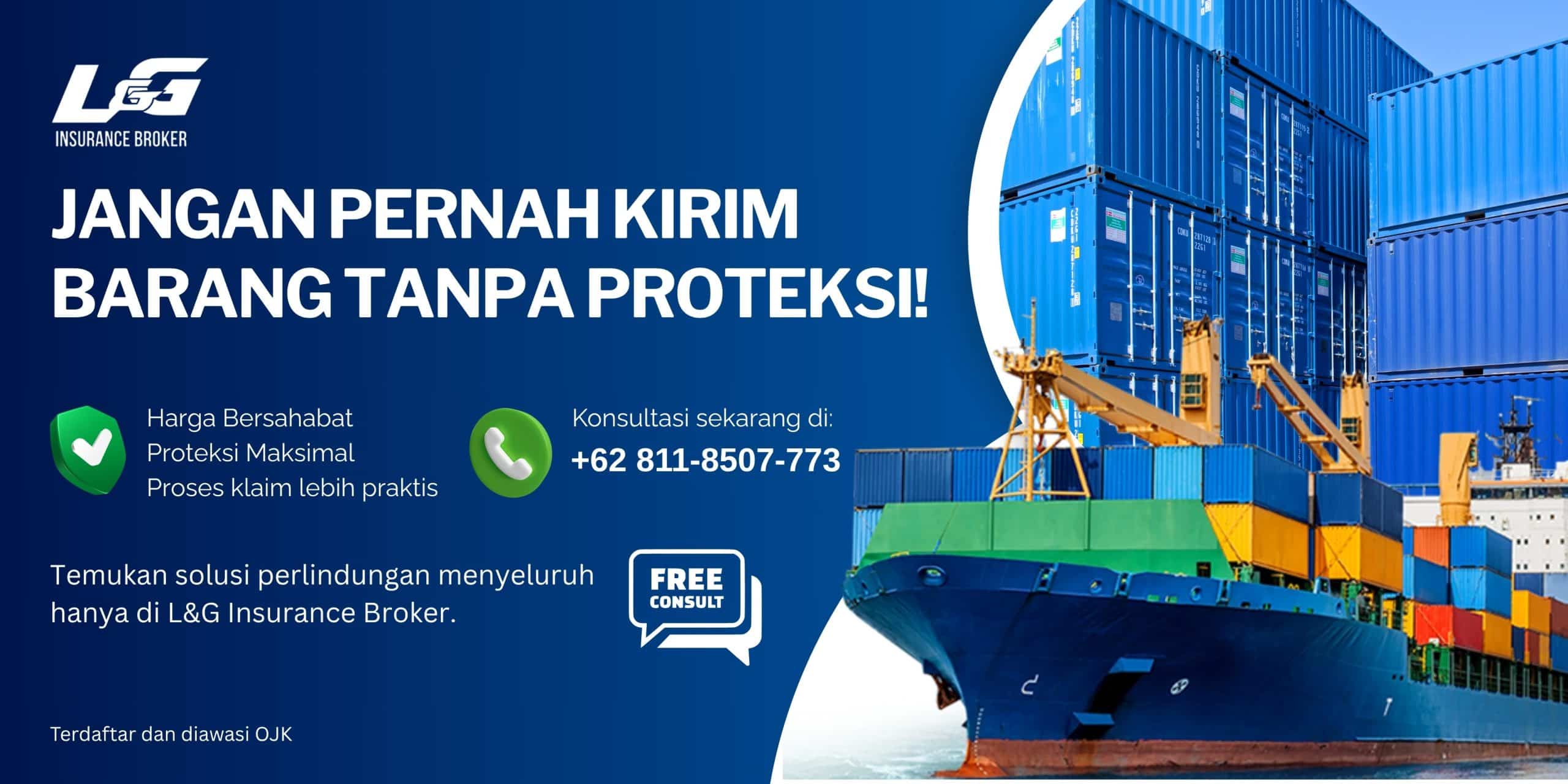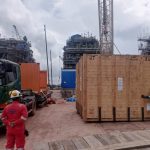Liga Asuransi – Dear Risk Managers and Risk Takers,
Welcome to the forefront of safeguarding your business ventures. In the realm of risk management and insurance, every decision is a strategic shield against uncertainty, and every action paves the path to resilience. Today, we embark on a journey through the dynamic landscape of bauxite transportation – a crucial artery in Indonesia’s economic infrastructure. As stalwarts of the industry, you understand the delicate balance between opportunity and risk, and it is with this understanding that we delve into the intricacies of securing your ventures.
Join us as we navigate the waters of uncertainty, charting a course toward comprehensive protection and unwavering confidence in your bauxite transportation endeavors. Let’s embark on this voyage together, fortifying your operations against the tides of unpredictability and ensuring a steady course toward success.
THE IMPORTANCE OF BAUXITE FOR INDONESIA
Bauxite holds paramount significance in Indonesia’s economic landscape, serving as a vital raw material in the production of aluminum, a cornerstone metal across diverse industries. Indonesia stands as a prominent global producer of bauxite, boasting extensive reserves scattered throughout its territories. The mining and processing of bauxite make substantial contributions to the country’s Gross Domestic Product (GDP) and export revenues. Moreover, Indonesia’s bauxite industry is a notable source of employment, offering livelihood opportunities to thousands involved in various facets of the sector, from mining operations to transportation logistics.
The sector’s economic impact transcends mere revenue generation, as bauxite exports bolster the country’s foreign exchange reserves, fortifying its international trade position. Furthermore, the presence of bauxite reserves has catalyzed downstream industrial development, spurring the establishment of aluminum smelting and processing facilities. These ventures not only add value to raw bauxite but also foster technological innovation and industrial diversification.
Notably, the bauxite industry drives significant investments in infrastructure, with mining and processing operations necessitating robust transportation networks, ports, and power facilities. This infrastructure development enhances connectivity, facilitates economic growth, and improves living standards, particularly in remote regions. In essence, bauxite stands as a cornerstone of Indonesia’s economic development strategy, underpinning growth, employment, industrialization, and infrastructure advancement.
UNDERSTAND THE RISK OF BAUXITE TRANSPORTATION
The transportation process from bauxite mines to processing plants or export terminals is a critical link in the supply chain that facilitates the efficient movement of this valuable raw material.
Beginning at the bauxite mines, which are often situated in remote or geographically challenging locations, the transportation process involves several stages to transport the extracted bauxite to processing plants or export terminals for further refining or shipment to global markets. Typically, the transportation process encompasses various modes of transport, including trucks, conveyor belts, railways, and sometimes maritime vessels, depending on the distance to be covered and the infrastructure available.
From the mines, bauxite may first be transported via trucks or conveyor belts to nearby processing plants, where it undergoes initial refining processes to extract alumina, the precursor to aluminum. Alternatively, in cases where processing plants are located at a considerable distance from the mines or lack direct access, bauxite may be transported via rail or conveyor belts to reach these facilities.
Once processed into alumina, the refined product may be transported by rail or conveyor belts to nearby aluminum smelters for further processing into aluminum metal. In cases where bauxite is destined for export, it may be transported from the mines to nearby ports or export terminals via trucks or railways, where it is loaded onto bulk carriers or barges for shipment to international markets.
The transportation process from bauxite mines to processing plants or export terminals requires careful coordination, logistical planning, and adherence to safety and environmental regulations to ensure the efficient and safe movement of this valuable commodity. Effective transportation management plays a crucial role in optimizing supply chain efficiency, minimizing costs, and maintaining the reliability of bauxite supply to meet the demands of downstream industries and global markets.
The transportation of bauxite poses various risks that can impact the safety, integrity, and efficiency of the supply chain. Here’s an explanation of the key risks associated with bauxite transportation:
Cargo Damage
Bauxite is typically transported in bulk quantities, either in open trucks, railcars, or bulk carriers. During transit, the cargo may be susceptible to damage due to handling errors, shifting of cargo, or adverse weather conditions. Mechanical impacts during loading, unloading, or transportation can cause physical damage to the bauxite, leading to quality degradation, loss of material, and potential contamination.
Theft and Pilferage
Bauxite transportation routes, especially in remote or poorly monitored areas, may be vulnerable to theft and pilferage. Unauthorized access to bauxite storage facilities, trucks, or railcars can result in theft of the cargo, leading to financial losses for the transporters and disruptions in supply chain operations. Additionally, theft incidents can compromise the security and safety of personnel involved in transportation activities.
Accidents and Collisions
The transportation of bauxite involves the movement of heavy vehicles, such as trucks and railcars, on public roads or railways. Accidents, collisions, and roadway incidents can occur due to various factors, including driver error, equipment malfunction, adverse road conditions, and inadequate infrastructure. These accidents can result in property damage, injuries, loss of life, and significant disruptions to transportation operations.
Environmental Hazards
Bauxite transportation activities may pose environmental hazards, particularly in cases of spills, leaks, or accidents involving hazardous materials. Spillage of bauxite dust or other contaminants during loading, unloading, or transportation can result in soil and water pollution, ecosystem damage, and negative impacts on human health and biodiversity. Environmental incidents can lead to regulatory violations, legal liabilities, and reputational damage for the parties involved in bauxite transportation.
Regulatory Compliance and Permitting
Bauxite transportation operations are subject to regulatory requirements, permits, and environmental standards imposed by government authorities. Non-compliance with regulatory obligations, such as vehicle weight limits, transportation permits, or environmental regulations, can result in fines, penalties, and legal consequences for the transporters, as well as disruptions in supply chain activities.
THE IMPORTANCE OF RISK MANAGEMENT AND INSURANCE
The importance of risk management strategies and insurance coverage in mitigating potential losses and liabilities in bauxite transportation cannot be overstated. Here’s why they are crucial:
Minimization of Financial Losses
Risk management strategies and insurance coverage provide financial protection against the various risks associated with bauxite transportation, such as cargo damage, theft, accidents, and environmental hazards. In the event of an unforeseen incident or loss, insurance policies can cover the costs of repair, replacement, or compensation, thereby minimizing the financial impact on the parties involved in transportation operations.
Protection of Assets and Investments
Bauxite transportation involves substantial investments in equipment, infrastructure, and logistics operations. Risk management strategies help protect these assets by identifying potential risks, implementing preventive measures, and transferring residual risks through insurance coverage. By safeguarding assets and investments, risk management practices contribute to the long-term sustainability and profitability of transportation activities.
Compliance with Regulatory Requirements
Effective risk management and insurance practices help ensure compliance with regulatory requirements, permits, and environmental standards imposed by government authorities. By addressing potential risks and liabilities proactively, transportation operators can avoid regulatory violations, fines, penalties, and legal consequences, thereby maintaining operational continuity and reputational integrity.
Enhancement of Safety and Security
Risk management strategies focus on identifying, assessing, and mitigating risks to personnel, equipment, and the environment. By implementing safety protocols, training programs, and security measures, transportation operators can enhance the safety and security of bauxite transportation activities, reducing the likelihood of accidents, incidents, and losses. Insurance coverage complements these efforts by providing financial support for risk mitigation initiatives and emergency response measures.
Business Continuity and Resilience
Unforeseen incidents or disruptions in bauxite transportation operations can have significant consequences for supply chain continuity, customer relationships, and market competitiveness. Risk management strategies and insurance coverage help ensure business continuity by minimizing the impact of disruptions, facilitating timely recovery, and mitigating potential losses. By enhancing resilience to risks and uncertainties, transportation operators can maintain operational stability and adaptability in a dynamic business environment.
TRANSPORTATION PROCESS
The transportation process of bauxite involves several stages and modes of transport to efficiently move this valuable raw material from mines to processing plants or export terminals. Here’s an overview of the bauxite transportation process:
- Extraction at Bauxite Mines:
Bauxite is extracted from mines located in various regions, often in remote or geographically challenging areas. The mining process involves the excavation of bauxite ore from open-pit or underground mines using heavy machinery and equipment.
- Loading and Haulage:
Once extracted, bauxite ore is loaded onto trucks, excavators, or conveyor belts for transportation to processing plants or stockpile areas. In some cases, bauxite may be transported directly from the mines to nearby processing plants, while in others, it may be transported to intermediate storage facilities for further processing or export.
- Transportation to Processing Plants:
Bauxite may be transported via trucks, conveyor belts, or railcars to nearby processing plants where it undergoes refining processes to extract alumina, the primary raw material used in aluminum production. Transportation routes are planned to minimize costs, optimize efficiency, and ensure timely delivery of bauxite to processing facilities.
- Rail and Conveyor Transportation:
In regions where processing plants are located at a considerable distance from the mines, bauxite may be transported via railways or conveyor belts. Rail transport allows for the efficient movement of bulk quantities of bauxite over long distances, with specialized railcars designed to transport bulk materials safely and securely.
- Export via Ports and Terminals:
Bauxite destined for export is transported from mines or processing plants to nearby ports or export terminals for shipment to international markets. At ports, bauxite is loaded onto bulk carriers or barges for transportation to aluminum smelters or refineries in other countries. Ports and terminals are equipped with specialized handling equipment and facilities to facilitate the loading and unloading of bulk cargo efficiently.
- Maritime Transportation:
Maritime transportation plays a crucial role in the export of bauxite, with bulk carriers and barges used to transport large quantities of bauxite over long distances across oceans and seas. Shipping routes are carefully planned to optimize efficiency, minimize transit times, and ensure the safe and secure delivery of bauxite to destination ports.
- Final Destination:
Upon arrival at their final destination, whether it be processing plants or export terminals, bauxite shipments undergo quality inspections, processing, or further transportation to downstream facilities for aluminum production.
TYPES OF INSURANCE FOR BAUXITE TRANSPORTATION
Different types of insurance coverage are available to mitigate risks associated with bauxite transportation. Here’s an explanation of the key insurance options:
- Cargo Insurance:
Cargo insurance provides coverage for loss or damage to the bauxite cargo during transit. This type of insurance protects the financial interests of the cargo owner or transporter against risks such as theft, damage, or spoilage during loading, unloading, or transportation. Cargo insurance policies may offer coverage for various perils, including fire, accidents, theft, natural disasters, and other unforeseen events that may result in loss or damage to the bauxite cargo.
- Marine Insurance:
Marine insurance is specifically designed to cover risks associated with maritime transportation of goods, including bauxite. This type of insurance provides coverage for vessel accidents, cargo losses, and liabilities arising from maritime perils such as collisions, capsizing, sinking, and piracy. Marine insurance policies may include hull insurance to protect the vessel itself, as well as cargo insurance to cover the bauxite cargo while in transit by sea. Marine insurance is essential for protecting the financial interests of shippers, carriers, and cargo owners involved in bauxite transportation by maritime vessels.
- Liability Insurance:
Liability insurance provides coverage for third-party claims for bodily injury, property damage, or other liabilities arising from bauxite transportation activities. Liability insurance protects transportation operators, cargo owners, and other parties involved in the supply chain against legal liabilities and financial losses resulting from accidents, injuries, or environmental damage caused by bauxite transportation operations. Liability insurance policies may include coverage for legal defense costs, settlements, and judgments arising from covered claims.
THE IMPORTANCE OF INSURANCE BROKER
Insurance brokers play a crucial role in facilitating the procurement of insurance coverage for bauxite transportation operations. Here’s why insurance brokers are essential:
Expertise and Industry Knowledge:
Insurance brokers possess specialized expertise and in-depth knowledge of the insurance market, including coverage options, policy terms, and underwriting requirements specific to bauxite transportation. Their understanding of the insurance landscape enables them to navigate complex insurance markets and negotiate favorable terms and conditions on behalf of their clients.
Access to Insurance Markets:
Insurance brokers have access to a wide network of insurance providers, including domestic and international insurers, underwriters, and specialty insurance markets. This access allows brokers to source competitive insurance quotes, compare coverage options, and tailor insurance solutions to meet the unique needs and risk profiles of their clients involved in bauxite transportation.
Customized Insurance Solutions:
Insurance brokers work closely with their clients to assess their risk exposures, identify insurance needs, and develop customized insurance solutions tailored to their specific requirements. Brokers analyze the risks associated with bauxite transportation operations, recommend appropriate insurance coverage options, and advise clients on risk management strategies to mitigate potential losses and liabilities.
Advocacy and Representation:
Insurance brokers act as advocates for their clients throughout the insurance procurement process, from initial risk assessment to claims management. Brokers represent the interests of their clients in negotiations with insurers, ensuring that they receive comprehensive coverage, competitive pricing, and responsive service. In the event of a claim, brokers assist clients in navigating the claims process, advocating for fair and timely resolution of claims with insurers.
Risk Management Guidance:
In addition to insurance placement services, insurance brokers provide valuable risk management guidance and support to their clients involved in bauxite transportation. Brokers offer advice on risk mitigation measures, loss prevention strategies, and regulatory compliance requirements to help clients reduce their exposure to risks and enhance their overall risk management capabilities.
Long-term Relationship Management:
Insurance brokers foster long-term relationships with their clients based on trust, integrity, and mutual respect. Brokers serve as trusted advisors to their clients, providing ongoing support, guidance, and advocacy on insurance and risk management matters. By building strong relationships with clients, brokers gain insights into their evolving needs and can adapt insurance solutions accordingly to ensure continued protection and peace of mind.
IN INDONESIA, WHY DO YOU NEED TO USE L&G INSURANCE BROKER?
L&G Insurance Broker is your trusted partner for securing comprehensive insurance coverage for bauxite transportation operations in Indonesia. Here’s why you should choose L&G Insurance Broker:
Specialization in Marine Cargo Insurance:
L&G Insurance Broker specializes in marine cargo insurance, offering tailored insurance solutions specifically designed to meet the unique needs and risk profiles of clients involved in bauxite transportation. With our expertise in marine insurance, we understand the intricacies of bauxite transportation and can provide customized coverage to protect your cargo against a wide range of risks.
Industry Knowledge and Experience:
With years of experience in the insurance industry, L&G Insurance Broker has a deep understanding of the bauxite transportation sector in Indonesia. Our team of experts possesses extensive industry knowledge and insights into the regulatory landscape, market trends, and emerging risks, enabling us to provide informed advice and guidance to our clients.
Access to Leading Insurers and Underwriters:
As a leading insurance broker, L&G Insurance Broker has established relationships with top-rated insurers and underwriters in the marine insurance market. Our strong industry connections and network of insurance partners allow us to access competitive insurance quotes, negotiate favorable terms, and secure comprehensive coverage for our clients at competitive premiums.
Customized Insurance Solutions:
At L&G Insurance Broker, we recognize that every client has unique insurance needs and risk exposures. That’s why we offer customized insurance solutions tailored to the specific requirements of clients involved in bauxite transportation. Whether you need cargo insurance, marine insurance, liability insurance, or a combination of coverages, we’ll work with you to develop a personalized insurance program that provides optimal protection for your business.
Responsive Service and Support:
At L&G Insurance Broker, we pride ourselves on delivering responsive service and support to our clients at every stage of the insurance process. From initial risk assessment to claims management, our dedicated team is committed to providing prompt assistance, timely advice, and proactive solutions to address your insurance needs and concerns.
Long-term Partnership Approach:
At L&G Insurance Broker, we value long-term relationships with our clients and strive to serve as trusted advisors and partners in their risk management and insurance journey. We take the time to understand your business, assess your risk exposures, and develop sustainable insurance solutions that evolve with your changing needs and priorities.
When it comes to protecting your bauxite transportation operations, trust L&G Insurance Broker to provide the expertise, experience, and personalized service you need to safeguard your cargo, mitigate risks, and achieve peace of mind. Contact us today to learn more about our marine cargo insurance solutions and how we can help protect your business against the uncertainties of bauxite transportation.
For all your insurance needs, contact L&G now!
—
MARINE CARGO INSURANCE FOR BAUXITE MORE PROFITABLE WITH MOP (Marine Open Policy) – DON’T WASTE YOUR TIME AND CALL US NOW
24 JAM L&G HOTLINE: 0811-8507-773 (CALL – WHATSAPP – SMS)
website: lngrisk.co.id
Email: customer.support@lngrisk.co.id
—






















